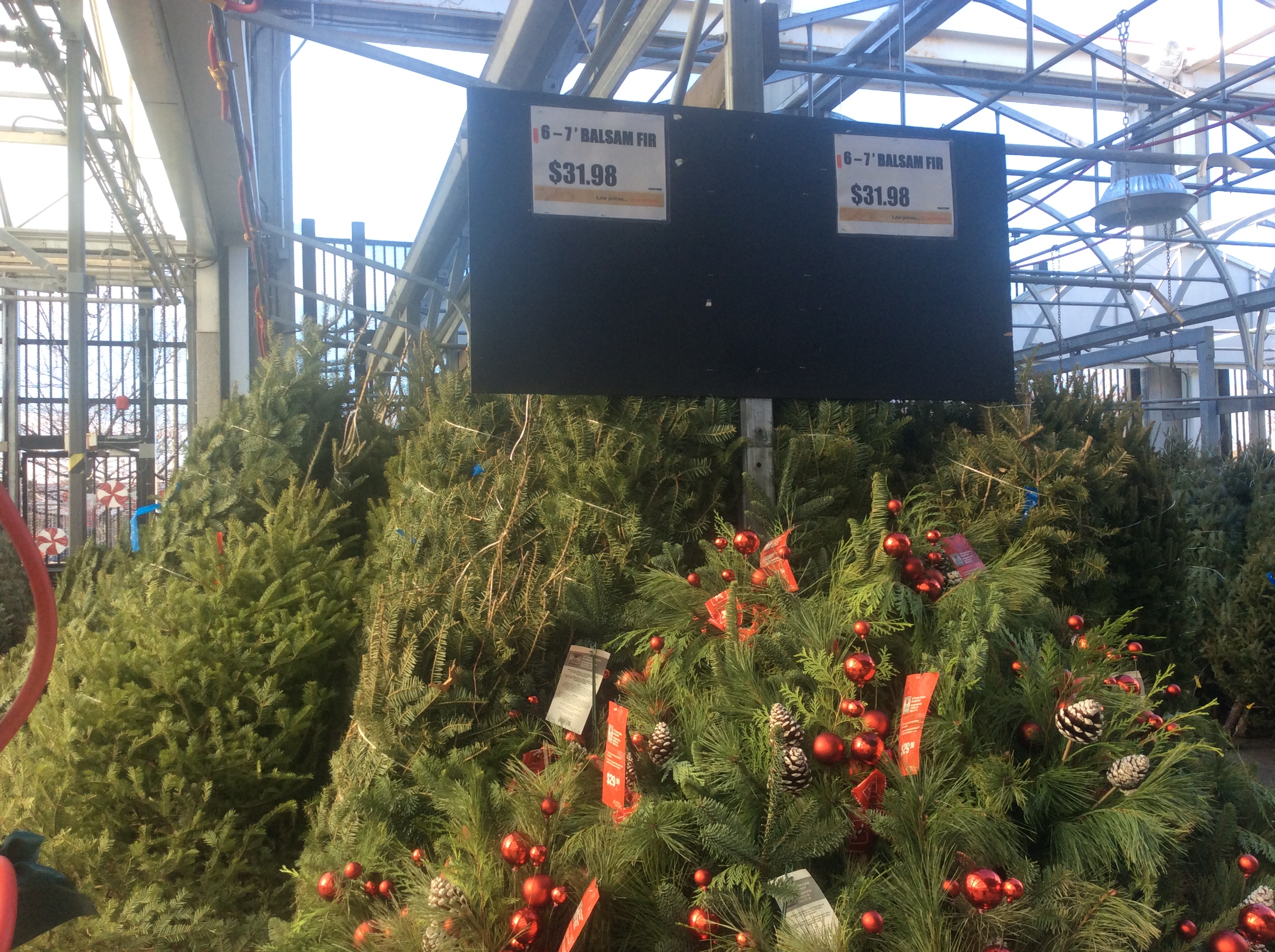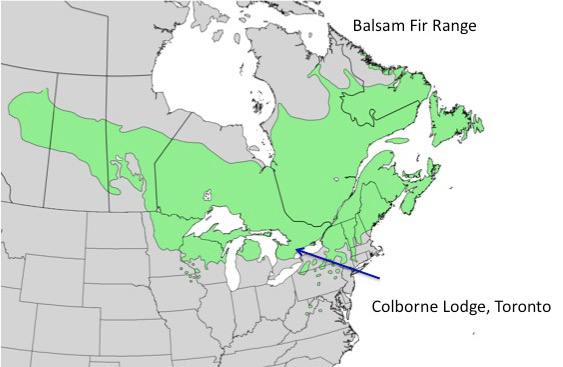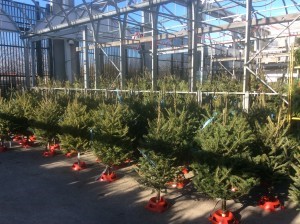By Dawn Bazely
Much of Canada’s landmass is dominated by the boreal forest ecosystem. The characteristic tree species of the boreal biome are conifers such as pines, firs and spruces. Another boreal evergreen species, white cedar, has a range that extends further south, and it ‘s common in the Great Lakes-St. Lawrence Region to the south of the boreal.
In the United Kingdom, traditional Christmas greenery includes holly and ivy, but in Canada and the northeastern USA, balsam fir, eastern white cedar and red and white pine are very popular in Christmas decorations (below). Many Canadian homes have real, rather than fake greenery in them over the holiday season.
In Canada, balsam fir (Abies balsamea), which also makes excellent wreaths, is one of the most popular species of Christmas tree. Lauren, who works at Toronto Parks’ historic Colborne Lodge, built in 1837 by John Howard, can be seen at far left, with a traditional balsam fir wreath on the front door, and left, inside with a balsam fir tree.
Those are real candles on the tree, for which the decorative style is intended to evoke a Victorian Christmas. John Howard, one of Toronto’s first architects, engineers, and surveyors, acquired the land, which is now High Park, Toronto, and it was never actually farmed or built upon. His home, Colborne Lodge, a regency-style cottage, contains much of the original furniture that John Howard built. It’s open to the public and is decorated in Victorian holiday style for the seasons. My favourite fact about Colborne Lodge is that it had the first indoor toilet in the City of Toronto!
Balsam fir has a wide range from Alberta in the west, across to eastern Canada and the USA. (range map, above, adapted from Wikimedia: Elbert L. Little, Jr., U.S. Department of Agriculture, Forest Service)
While cutting a tree from the local wood lot is still popular, these days, most trees are grown on Christmas tree farms. While you can buy them pre-cut, many families also head out to cut their own tree from a tree farm.
In addition to its popularity for Christmas decorations, balsam fir is also the source of resin, which oozes from blisters on the trunk. This sticky resin has many uses, including for mounting specimens for microscopy! Though, I understand that mostly synthetic resins are used these day. I can personally attest to the fact that resin on the hands and clothing is tough to get off, so my advice is, if you want to hug a tree, make it something other than a balsam fir!
References:
About Colborne Lodge: http://bit.ly/1NYvKvg
Balsam fir resin: http://bit.ly/1AXZ8wi
Christmas Tree Farmers of Ontario Association: http://bit.ly/1OqWQ2M
State of Canada’s Private Forests (1998): http://cfs.nrcan.gc.ca/pubwarehouse/pdfs/10390.pdf
On Twitter: @dawnbazely & @ColborneLodgeTO.
Editor’s note: for a general list of Christmas tree species see Advent Botany 2014 – Day 15
Advent Botany 2015 – Day 2







Pingback: #AdventBotany 2015 – Day 2 – the Yule Log | Culham Research Group
Pingback: Advent Botany 2015, Day1: Balsam Fir – a popular Christmas tree in Canada « Herbology Manchester
Pingback: Whewell’s Gazette: Year 2, Vol. #21 | Whewell's Ghost
Pingback: 2014 Advent Botany – Day 15 – the Christmas tree | Culham Research Group
Pingback: Advent Botany 2015 – Day 6: White Cedar | Culham Research Group
Pingback: #AdventBotany and Alien Abductions 😉 | Dawn Bazely: forthright, collaborative, interdisciplinary & fun
Pingback: Guest blogging about Advent Botany at the University of Reading | Dawn Bazely: forthright, collaborative, interdisciplinary & fun
Pingback: What Trees Talk About features the excellent research of Canadian ecologists | Bazely Biology lab: collaborative, interdisciplinary, fun
Pingback: #AdventBotany 2018, Day 18: Advent VLOG | Culham Research Group
Pingback: A VLOG to celebrate the 5th birthday of the #AdventBotany blog series | Bazely Biology lab: collaborative, interdisciplinary, fun